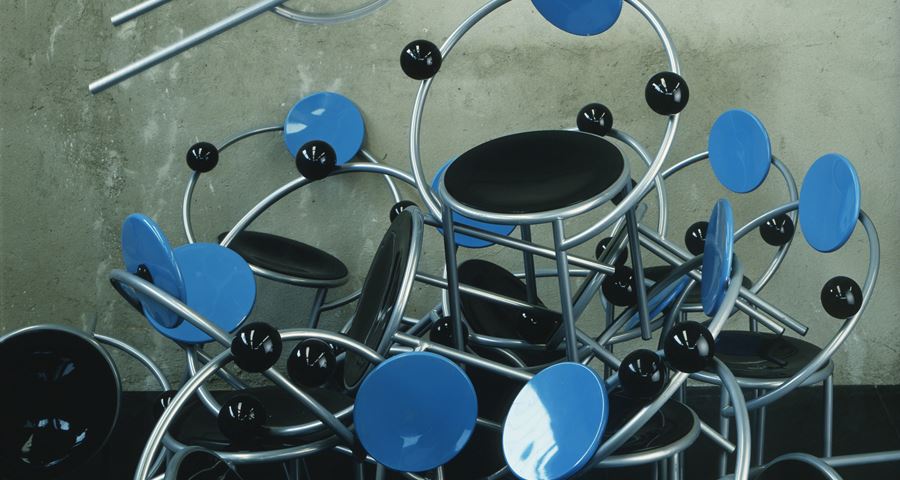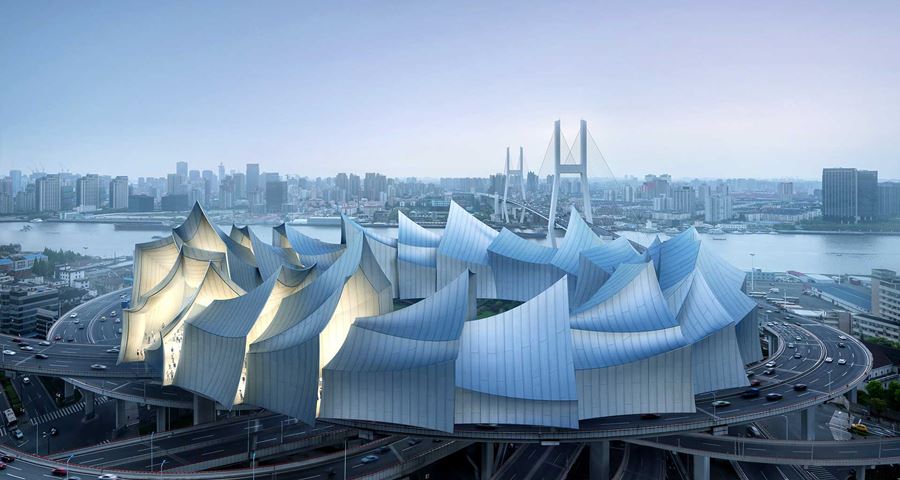Designs and Designers
Q&A with Michele De Lucchi
The Design Museum caught up with Michele De Lucchi about his career past and present, where he likes to give his mind free rein, and his love for traditional craftsmanship.
Michele De Lucchi has been a protagonist of avant-garde architecture and design since the 1970s. He has designed furniture for some of the world’s most well-known design companies and developed various architecture projects. De Lucchi is founder and member of AMDL CIRCLE, a multidisciplinary group of thinkers and innovators
When did your love for design begin?
It began at the end of the 70’s. Urban performances, conceptual theories and radical movement utopias almost drained us and there was a lot of desire to come back to designing objects. We did so with a new mindset, putting the individual at the centre, rather than responding to industrial or market pressure. With this concept in mind, Alchimia and Memphis were born.
During your time at Olivetti (1988 – 2002) you worked on a lot of office design, what transformations have you seen in our working environment since 2002?
When I joined Olivetti, technology was becoming an integral part of the office routine and designers found themselves guiding users towards a new familiarity and practicality to help them better use the machines. At the time, designing meant organising at best all desks and computer space.
An icon of Italian office design is the Tolomeo desk lamp, why do you think it has remained such a timeless piece?
I think that the Tolomeo lamp still represents an idea of frugal technology that is very much needed today. Tolomeo combines technology with a domestic feeling. It’s a mechanical machine where every part is easy to understand, where nothing is obscure: it conveys a feeling of calm.

You were part of many design movements such as Memphis Milano during the 80s. What did you learn from your mentor, Ettore Sottsass?
With Ettore I learned that the individual must be put always at the centre. I learned that architecture and design don’t need to serve factories and businesses but to serve mankind. We all need to coexist with each other and with the planet that hosts us.
What was the inspiration behind “The First Chair”?
To design the First Chair I started from a stool. Then I added one seat back made with a pipe, and then a disk with two spheres to make it more comfortable. It looked like a universe with the sun and planets.

Colour plays such an instrumental role in Memphis design. Do you think it also plays a role in improving our mental health and well-being?
I know that many studies have been carried out about colour and the energy that reverberated light can bring. I am sure that colours trigger some reactions upon the viewer, I know some colours excite while others have calming properties. Having said that, I don’t think there is a scientific reason why one likes or dislikes certain colour and colour combinations. These preferences are a product of culture and personal experiences. I have often used colours as a way to provoke. Colours can impress or seduce. Some quite banal objects can give great results thanks to a careful colour layout.
Where do you most like to go to give your mind free rein?
At Chioso, my private office in Angera, on Lake Maggiore. It’s quite a different space than my Milan studio, where I work surrounded by many people. I go to Chioso to work alone, I write, I draw, I sculpt and I meditate.

How did your love for wood sculpting begin? What about it gives you joy?
I always liked to draw with pens and coloured pencils. At a certain moment I understood that I also liked to draw with a chainsaw on wooden blocks exactly how I would draw with pencils on paper. I then began to work methodically with the wooden blocks that laid stacked on the Chioso’s old henhouse. I rough-cut them and then refined them with smaller and thinner tools. I feel there is a similarity between the delicate line of pencils and the rough cut of the chainsaw: both gestures stem from a creative output; a simple gesture involving mind and hands, which operate directly on matter, without any digital or software interference.

Do you think we are becoming increasingly more exhausted by technology? Will we return to traditional, tactile forms of craftsmanship to switch off?
I don’t think one thing excludes the other. The more technology and automation increase, the more unique pieces will increase in value. Hand-made artwork is created by authors who can spot details that were once unimportant or invisible to others.
You have been working on a 2-year research project with AMDL Circle, called Earth Stations. What are Earth Stations, and what’s the philosophy behind them?
In a world experiencing constant change, we need to design architecture for future destinations. Earth Stations are new types of buildings designed to foster human interactions. They are not just a provocative result of a conceptual research: they stem from the need of reinventing human coexistence in the light of sustainability, the greatest theme of our times. Earth Stations are stations that respond to change and they have to promote change.They respond to our evolving lifestyles where artificial intelligence increasingly frees man from bureaucratic and repetitive tasks, establishing an opportunity to create places that express personal freedom and harness the enormous potential of technology.

How can technology help us design work environments for the future?
Technology is a great helper. It helps us designing spaces but also to imagine how life would be in the future. Technology is key for many initial design phases, for prototypes, for distribution and transport of objects. Its power would increase but I think there will always be a place for craftsmanship and dexterity. In fact, hand made objects will probably find new value in the future.

Do you have any words of wisdom for young designers starting out?
Keep thinking about new shapes and new solutions for the design of the future.